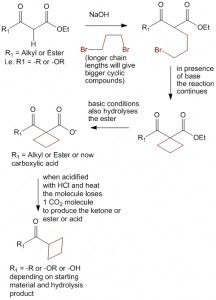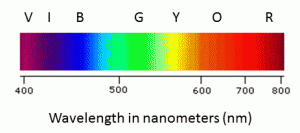By: Sudeshna Dighe, Varun Doshi, Rahul Jadhav
What is a gene?
- It is a basic unit of heredity, which are carried on a chromosome they encode how to make a protein (DNAàRNA àproteins).
- When altered causes dysfunction of a protein. When there is a mutation in the gene, then it will change the codon, which will change which amino acid that will lead to change in the conformation of protein and lead to disfunctioning of protein.
- Genetic disorders result from mutations in the genome.
What is Gene Therapy?
It is a technique for correcting defective genes that are responsible for disease development
There are four approaches of Gene Therapy:
- A normal gene inserted to compensate for a nonfunctional gene
- An abnormal gene traded for a normal gene
- An abnormal gene repaired through selective reverse mutation
- Change the regulation of gene pairs
Gene therapy may be classified into the two following types
Germ line gene therapy
- In the case of germ line gene therapy, germ cells, i.e., sperm or eggs are modified by the introduction of functional genes, which are ordinarily integrated into their genomes.
- Therefore, the change due to therapy would be heritable and would be passed on to later generations. This new approach, theoretically, should be highly effective in counteracting genetic disorders and hereditary diseases. However, many jurisdictions prohibit this for application in human beings, at least for the present, for a variety of technical and ethical reasons.
- In the case of somatic gene therapy, the therapeutic genes are transferred into the somatic cells of a patient. Any modifications and effects will be restricted to the individual patient only, and will not be inherited by the patient’s offspring or later generations.
Somatic gene therapy
History of Gene therapy:
In the 1980s, Scientists began to look into gene therapy. They would insert human genes into a bacteria cell. Then the bacteria cell would transcribe and translate the information into a protein. Then they would introduce the protein into human cells
First case of Gene therapy:
The first gene therapy was performed on September 14th 1990, Ashanti De Silva was treated for SCID ( Severe combined immunodeficiency )Doctors removed her white blood cells, inserted the missing gene into the WBC, and then put them back into her blood stream. This strengthened her immune system. Only worked for a few months.
How it works ?
- 1. A vector delivers the therapeutic gene into a patient’s target cell
2. The target cells become infected with the viral vector
3. The vector’s genetic material is inserted into the target cell
- Functional proteins are created from the therapeutic gene causing the cell to return to a normal state
Viruses
- Replicate by inserting their DNA into a host cell
- Gene therapy can use this to insert genes that encode for a desired protein to create the desired trait
Types of Viruses
- Adeno-associated Viruses
- Retroviruses
- Adeno-associated Viruses
- 1. Adeno-associated Viruses– Adeno-associated Virus- small, single stranded DNA
that insert genetic material at a specific point on chromosome 19. From parvovirus family- causes no known disease and doesn’t trigger patient immune response. It has low information capacity. A gene is always “on” so the protein is always being expressed, possibly even in instances when it isn’t needed. Hemophilia treatments, for example, a gene-carrying vector could be injected into a muscle, prompting the muscle cells to produce Factor IX and thus prevent bleeding.
- 2. Retroviruses– It is created by double stranded DNA copies from RNA. The
retrovirus goes through reverse transcription using reverse transcriptase and RNA the double stranded viral genome integrates into the human genome using integrase, it inserts the gene anywhere because it has no specific site it may cause insertional mutagenesis. Vectors used are derived from the human immunodeficiency virus (HIV) and are being evaluated for safety.
- 3. Adenoviruses- Are double stranded DNA genome that cause respiratory,
intestinal, and eye infections in humans. The inserted DNA is not incorporated into genome .and they are not replicated though Ex. Common cold
Gene therapy using an Adenovirus vector:
A new gene is inserted into an adenovirus vector, which is used to introduce the modified DNA into a human cell. If the treatment is successful, the new gene will make a functional protein.
Non-viral Options:
- Direct introduction of therapeutic DNA: Its only with certain tissue and requires a
lots of DNA.
- Creation of artificial lipid sphere with aqueous core, liposome.
- Chemically linking DNA to molecule that will bind to special cell receptors but
DNA is engulfed by cell membrane and less effective.
- Trying to introduce a 47th chromosome it exist alongside the 46 othersand this
could carry a lot of information.
Successful Gene Therapy for Severe Combined Immunodeficiency:
- Infants with severe combined immunodeficiency are unable to mount an adaptive immune response; because they have a profound deficiency of lymphocytes.
- Severe combined immunodeficiency is inherited as an X-linked recessive disease, which for all practical purposes affects only boys. In the other half of the patients with severe combined immunodeficiency, the inheritance is autosomal recessive — and there are several abnormalities in the immune system when the defective gene is encoded on an autosome.
- A previous attempt at gene therapy for immunodeficiency was successful in children with severe combined immunodeficiency due to a deficiency of adenosine deaminase. In these patients, peripheral T cells were transduced with a vector bearing the gene for adenosine deaminase.
- The experiment was extremely labor intensive, because mature peripheral-blood T cells were modified rather than stem cells, and the procedure therefore had to be repeated many times to achieve success.
- A previous attempt at gene therapy for immunodeficiency was successful in children with severe combined immunodeficiency due to a deficiency of adenosine deaminase.
- In these patients, peripheral T cells were transduced with a vector bearing the gene for adenosine deaminase. The experiment was extremely labor intensive, because mature peripheral-blood T cells were modified rather than stem cells, and the procedure therefore had to be repeated many times to achieve success.
- 2. Parkinson’s Disease:
- Neurologix a biotech company announced that they have successfully completed its
- landmark Phase I trial of gene therapy for Parkinson’s Disease.
- This was a 12 patient study with four patients in each of three dose escalating
- cohorts. All procedures were performed under local anesthesia and all 12 patients
- were discharged from the hospital within 48 hours of the procedure, and followed
- for 12 months. Primary outcomes of the study design, safety and tolerability, were
- successfully met. There were no adverse events reported relating to the treatment
- The gene transfer procedure utilized the AAV (adeno-associated virus) vector, a virus
- that has been used safely in a variety of clinical gene therapy trials, and the vehicle that
- will be used in all of the company’s first generation products, including epilepsy and
- Huntington’s disease. In its Parkinson’s disease trial, Neurologix used its gene transfer
- technology.
Recent Developments:
- Genes get into brain using liposomes coated in polymer called polyethylene glycol
potential for treating Parkinson’s disease
- RNA interference or gene silencing to treat Huntington’s
siRNAs was used to degrade RNA of particular sequence and so abnormal protein won’t be
produced
- Create tiny liposomes that can carry therapeutic DNA through pores of nuclear
membrane
- Sickle cell successfully treated in mice
Hybrid methods
- Due to every method of gene transfer having shortcomings, there have been some hybrid methods developed that combine two or more techniques.
- Virosomes are one example; they combine liposomes with an inactivated HIV or influenza virus. This has been shown to have more efficient gene transfer in respiratory epithelial cells than either viral or liposomal methods alone. Other methods involve mixing other viral vectors with cationic lipids or hybridizing viruses.
Some of the problems of gene therapy include:
- Short-lived nature of gene therapy – Before gene therapy can become a permanent cure for any condition, the therapeutic DNA introduced into target cells must remain functional and the cells containing the therapeutic DNA must be long-lived and stable. Problems with integrating therapeutic DNA into the genome and the rapidly dividing nature of many cells prevent gene therapy from achieving any long-term benefits. Patients will have to undergo multiple rounds of gene therapy.
- Immune response – Anytime a foreign object is introduced into human tissues, the immune system has evolved to attack the invader. The risk of stimulating the immune system in a way that reduces gene therapy effectiveness is always a possibility. Furthermore, the immune system‘s enhanced response to invaders that it has seen before makes it difficult for gene therapy to be repeated in patients.
- Problems with viral vectors – Viruses, the carrier of choice in most gene therapy studies, present a variety of potential problems to the patient —toxicity, immune and inflammatory responses, and gene control and targeting issues. In addition, there is always the fear that the viral vector, once inside the patient, may recover its ability to cause disease.
- Multigene disorders – Conditions or disorders that arise from mutations in a single gene are the best candidates for gene therapy. Unfortunately, some of the most commonly occurring disorders, such as heart disease, high blood pressure, Alzheimer’s disease, arthritis, and diabetes, are caused by the combined effects of variations in many genes. Multigene or multifactorial disorders such as these would be especially difficult to treat effectively using gene therapy.
- Chance of inducing a tumor (insertional mutagenesis) – If the DNA is integrated in the wrong place in the genome, for example in a tumor suppressor gene, it could induce a tumor. This has occurred in clinical trials for X-linked severe combined immunodeficiency (X-SCID) patients, in which hematopoietic stem cells were transduced with a corrective transgene using a retrovirus, and this led to the development of T cell leukemia in 3 of 20 patients.
References:
http://gslc.genetics.utah.edu/units/genetherapy/
http://web.archive.org/web/20030219034830/http://www.gtherapy.co.uk/
http://www.cheng.cam.ac.uk/research/groups/biosci/index.html



